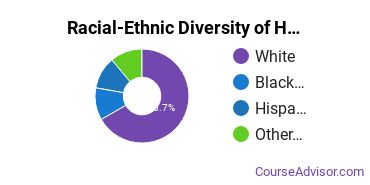Homeland Security, Law Enforcement & Firefighting at MSU Texas
MSU Texas is located in Wichita Falls, Texas and has a total student population of 5,860.
Want to know more about the career opportunities in this field? Check out the Careers in Homeland Security, Law Enforcement & Firefighting section at the bottom of this page.
MSU Texas Homeland Security, Law Enforcement & Firefighting Degrees Available
- Bachelor’s Degree in Homeland Security, Law Enforcement & Firefighting
- Master’s Degree in Homeland Security, Law Enforcement & Firefighting
Online Classes Are Available at MSU Texas
Don't have the time or the flexibility in your schedule to take traditional classes? Online courses may be the perfect solution for you. They allow independent learners to study when and where they want to while offering the rigor of in-person classes.
Are you one of the many who prefer to take online classes? MSU Texas offers distance education options for homeland security, law enforcement & firefighting at the following degree levels:
- Master’s Degree
MSU Texas Homeland Security, Law Enforcement & Firefighting Rankings
The homeland security, law enforcement & firefighting major at MSU Texas is not ranked on College Factual’s Best Colleges and Universities for Homeland Security, Law Enforcement & Firefighting. This could be for a number of reasons, such as not having enough data on the major or school to make an accurate assessment of its quality.
Homeland Security, Law Enforcement & Firefighting Student Demographics at MSU Texas
Take a look at the following statistics related to the make-up of the homeland security, law enforcement & firefighting majors at MSU Texas.
MSU Texas Homeland Security, Law Enforcement & Firefighting Bachelor’s Program

Prospective students may be interested in knowing that this school graduates 14% more racial-ethnic minorities in its homeland security, law enforcement & firefighting bachelor's program than the national average.*
The following table and chart show the race/ethnicity for students who recently graduated from MSU Texas with a bachelor's in homeland security, law enforcement & firefighting.

| Race/Ethnicity | Number of Students |
|---|---|
| Asian | 0 |
| Black or African American | 8 |
| Hispanic or Latino | 8 |
| White | 12 |
| International Students | 0 |
| Other Races/Ethnicities | 3 |
MSU Texas Homeland Security, Law Enforcement & Firefighting Master’s Program

Of the students who received a homeland security, law enforcement & firefighting master's degree from MSU Texas, 56% were white. This is above average for this degree on the natiowide level.
The following table and chart show the race/ethnicity for students who recently graduated from MSU Texas with a master's in homeland security, law enforcement & firefighting.

| Race/Ethnicity | Number of Students |
|---|---|
| Asian | 0 |
| Black or African American | 1 |
| Hispanic or Latino | 3 |
| White | 5 |
| International Students | 0 |
| Other Races/Ethnicities | 0 |
Concentrations Within Homeland Security, Law Enforcement & Firefighting
The following homeland security, law enforcement & firefighting concentations are available at MSU Texas. The table shows all degrees awarded in this field awarded for all degree levels at MSU Texas. A concentration may not be available for your level.
| Concentration | Annual Degrees Awarded |
|---|---|
| Criminal Justice & Corrections | 41 |
Related Majors
Careers That Homeland Security, Law Enforcement & Firefighting Grads May Go Into
A degree in homeland security, law enforcement & firefighting can lead to the following careers. Since job numbers and average salaries can vary by geographic location, we have only included the numbers for TX, the home state for MSU Texas.
| Occupation | Jobs in TX | Average Salary in TX |
|---|---|---|
| Accountants and Auditors | 115,270 | $80,200 |
| Police and Sheriff’s Patrol Officers | 60,260 | $61,870 |
| Firefighters | 29,110 | $52,520 |
| Computer Workers | 25,620 | $90,290 |
| Managers | 20,710 | $122,130 |
References
*The racial-ethnic minorities count is calculated by taking the total number of students and subtracting white students, international students, and students whose race/ethnicity was unknown. This number is then divided by the total number of students at the school to obtain the racial-ethnic minorities percentage.
- College Factual
- National Center for Education Statistics
- O*NET Online
- Image Credit: By Michael Barera under License
More about our data sources and methodologies.
